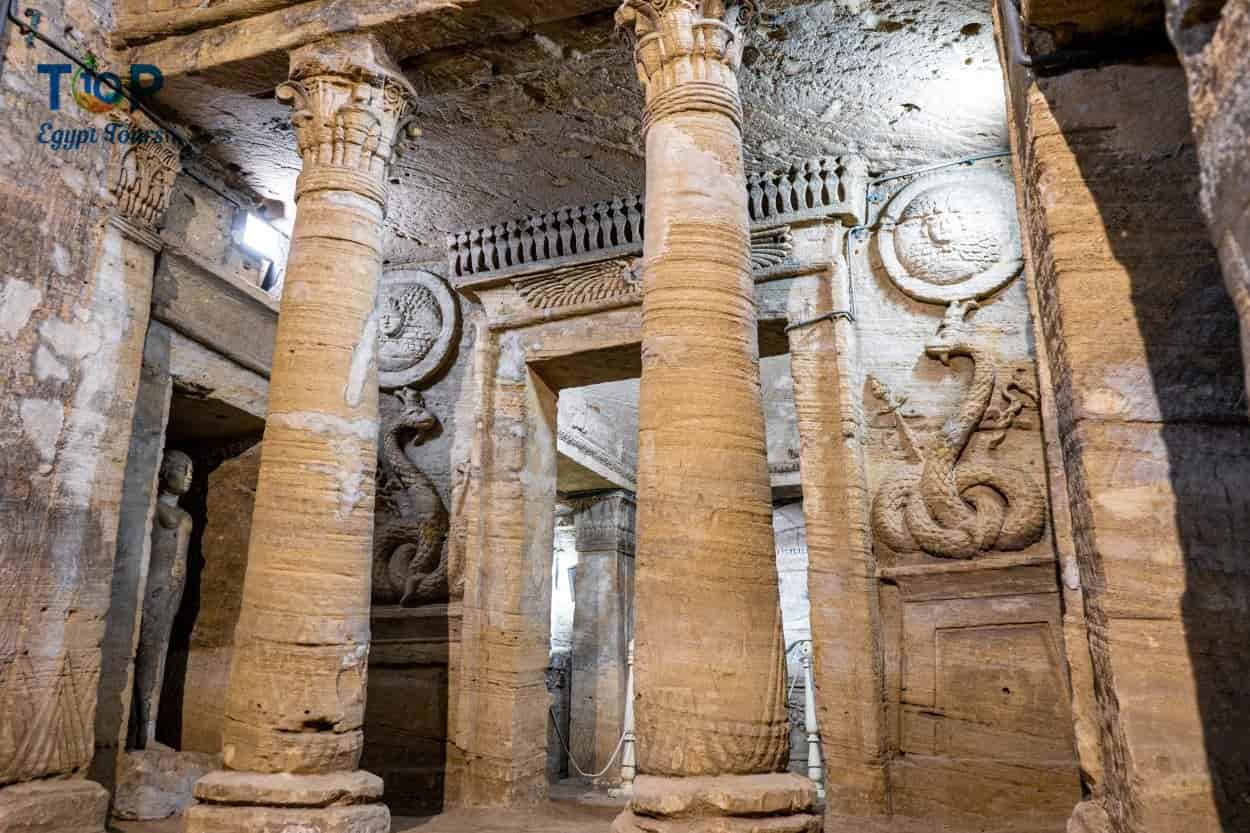Nestled along the coastal charm of Alexandria lies a hidden gem that echoes with the whispers of ancient civilizations – the Catacombs of Kom El Shoqafa. As we delve into the depths of this underground wonder, we unravel a fascinating chapter of Hellenistic heritage that adds a unique layer to Egypt’s rich tapestry.
The catacombs are spread over three levels, with the uppermost level serving as a funeral chapel for the wealthy Roman family of Karanis. The chapel features stunning frescoes and intricate carvings that depict scenes from Greek mythology and everyday life. The most famous of these is the painting of Orpheus, which is considered one of the finest examples of Roman art in Egypt.
As you descend deeper into the catacombs, you’ll find yourself in a maze of narrow passageways and dimly lit chambers. The walls are lined with intricate carvings and hieroglyphs that tell stories of ancient Egyptian beliefs and customs. One such chamber is dedicated to the goddess Isis, who was revered as the mother goddess and protector of women and children.
But what truly sets the Catacombs of Kom El Shoqafa apart is its unique blend of architectural styles. The uppermost level features traditional Egyptian elements such as sarcophagi and mummies, while the lower levels incorporate Greek and Roman influences such as arched doorways and intricate mosaics. This fusion of styles is a testament to the multicultural heritage that has shaped Alexandria over the centuries.
The catacombs are also home to a number of fascinating artifacts that shed light on ancient Egyptian burial customs. One such artifact is a sarcophagus that dates back to the Ptolemaic dynasty (305-30 BC). The sarcophagus is carved in the shape of a lioness and is believed to have belonged to a high-ranking official or member of the royal family.
Another notable feature of the catacombs is its use of underground water channels known as qanats. These channels were used to transport water from nearby sources to the city, providing a reliable source of hydration during times of drought or scarcity. The qanats also served as a natural cooling system, helping to regulate temperatures within the tombs and chambers.
Preservation Efforts and Visitor Experience:
A. Ongoing Restoration
Recognizing the historical significance of the Catacombs of Kom El Shoqafa, ongoing preservation efforts aim to maintain and protect this underground wonder. Collaborative initiatives involving archaeologists and conservationists ensure that future generations can continue to explore and appreciate this archaeological marvel.
B. Visitor Experience
Today, visitors can embark on a mesmerizing journey through time as they explore the Catacombs of Kom El Shoqafa. Guided tours provide insights into the historical context, architectural significance, and cultural nuances that make this underground necropolis an indispensable stop for anyone fascinated by Egypt’s rich past.
In the heart of Alexandria, the Catacombs of Kom El Shoqafa stand as a testament to the enduring legacy of Hellenistic heritage. From its mysterious origins to the architectural marvels that grace its underground chambers, this site offers a captivating glimpse into the multicultural influences that shaped Alexandria’s history. As we tread carefully through the corridors of this subterranean wonder, we not only unearth the stories of those laid to rest but also pay homage to a bygone era that continues to resonate through the ages.



Comment (0)